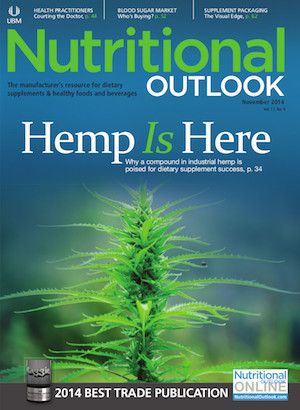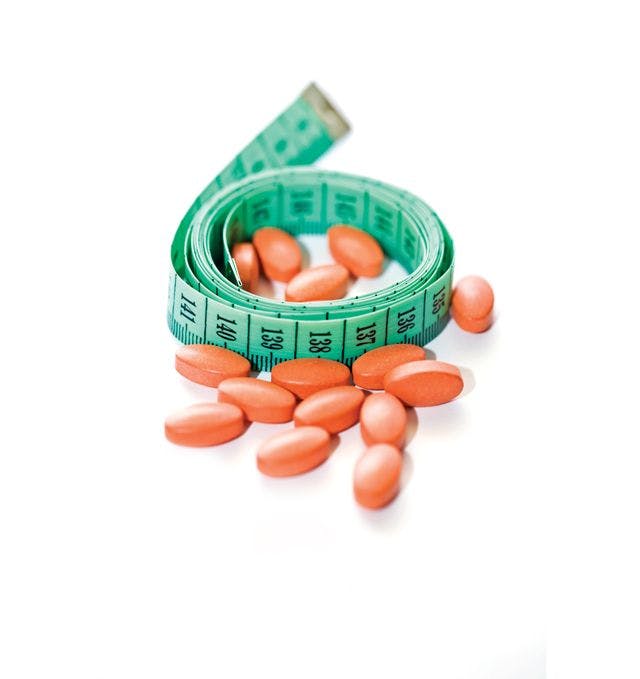Key Technologies for Dietary Supplement Quality Control
The role of texture analyzers and rheometers
Rheology is a topic fairly broad in scope. In general, it is the study of the flow behavior of materials, including both elastic and viscous properties. In the consumer packaged goods industry, rheology can be used to determine how materials move during processing, what their flow characteristics are like in packaged form, and, finally, how they behave when used by the customer.
In the nutraceutical and food industry, rheology is important because these products encompass both liquids (such as beverages) and solids (like powders). When it comes to product testing, rheometers, as well as texture analyzers, help to ensure quality and consistency in production, as well as assist during evaluation in R&D studies. These detailed test methodologies enable food scientists to understand and correctly predict flow behavior in order to monitor the effect of changes in formulation on product performance. Let’s take a look at how specific nutraceuticals are tested for flow properties, including the test methodology and equipment used to make relevant measurements.
At Full Strength
Many vitamins come in hard-capsule form. Testing the tensile strength and extensibility of hard gelatin capsules is crucial to ensure that capsules can withstand the rigors of production and use.
When formulating a nutraceutical, one key element a manufacturer needs to consider is whether the nutraceutical is compatible with a capsule’s gelatin shell. Certain substances may negatively react with the gelatin and cause it to fail. Another common failure in a gelatin capsule is a highly hydroscopic filling, which may absorb water from the capsule shell, in turn causing the shell to become brittle and prone to breakage under mechanical strain.
A texture analyzer is the instrument of choice for evaluating mechanical properties of tensile strength and extensibility (capability to be stretched). The device shown in Figure 1 is called a capsule loop tensile fixture (CLT) and can be used with a texture analyzer (Figure 2) to quantify the mechanical strength of the capsule shell. This combination of equipment enables manufacturers to identify and quantify the effects that different fillings will have on the strength and stability of a capsule.
The CLT fixture is used to break apart the shell of hard gelatin capsules and, in so doing, enables manufacturers to quantify how much strain the capsules can withstand. The sample capsule is placed over two small pins, which are then pulled apart while the load force is recorded.
Sample preparation must be carefully controlled and involves the following steps:
- Store the hard gelatin capsule overnight at room temperature
- Separate capsules into two halves (body and lid) and empty the contents
- Select the smaller half of the capsule (lid) for testing
During the test, the upper half of the CLT fixture moves away from the lower half at a speed of 1.0 mm/sec or slower until a trigger force of 10 gm is detected. (The trigger force is the minimum amount of force that must be detected before the instrument starts to measure and report the tensile load.) Once the test commences, the capsule is stretched with increasing force to a point where the sample can no longer support the applied force and breaks. The amount of force measured at the breaking point is an indication of the hardness of the sample.
A typical plot of the tension test showing force load versus time is illustrated in Figure 3. Note that there is a double peak for each test; this double peak indicates that there is some amount of stretching or extension that occurs just before the capsule breaks. The area under the curve for a similar graph, which plots force load versus distance, is a measure of the work required to break the capsule wall.
Figure 4 shows the data summary for four test runs. Note that the software used to control the texture analyzer can also compute helpful information such as the average value for peak load and the standard deviation.
The test results show that this method is suitable for testing the tensile strength and extensibility of hard gelatin capsules. In order to yield reproducible and repeatable test results, manufacturers must adhere to the test procedure, sample preparation, and equipment setup. In our test case, several tests were done on the hard gelatin capsule, and all test results were within 10% tolerance, indicating that this capsule has sufficient tensile strength and extensibility.
The following preparatory steps must be observed in order to ensure repeatability and reproducibility:
- Use similar ends of the hard gelatin capsule cap
- Ensure identical sample temperatures during testing
Flow with It
Methods used to test the flow properties of liquid and semi-solid nutraceutical and food ingredients require use of a rheometer. Rheometer measurements typically include both yield stress and viscosity flow curve. The rheometer shown in Figure 5 uses a cone spindle to shear the sample material in order to quantify these two properties. Yield stress is the applied stress needed to make a structured fluid flow. Take the example of mayonnaise. Depending on the mayonnaise’s fluid properties, the material may be more viscous (behaving more like a semi-solid) than fluid. For some products, a semi-solid texture may be desired, but for others, it might not be-for instance, in cases when the manufacturer would like to reduce the amount of product residue that sticks to the inside of the packaging.
During sample preparation, engineers place a very small volume of material on the rheometer’s temperature-controlled plate. The first test involves applying increasing torque to the cone spindle until rotation commences. The associated torque value at that instant in time is a measure of yield stress. The second test involves rotating the spindle with increasing speed and measuring the viscosity at each speed. The typical flow behavior for nutraceutical materials is “pseudoplastic,” meaning viscosity decreases with increasing shear rate. Examples of yield stress and viscosity flow curve are shown in Figures 6 and 7.
Controlling Quality
There are many reasons to use texture analyzers and rheometers as quality-control tools for consistency in production and R&D. Good practice, as shown in these examples, ultimately ensures product consistency between different batches, shifts, and plants, thus guaranteeing a consistent product, no matter where it is manufactured.
Eric Chiang is product manager, texture analyzers, at Brookfield Engineering Laboratories (Middleboro, MA), whose viscometers/rheometers have been the world standard in viscosity measurement and control of liquids and semi-solids for 80 years.
Photos and images courtesy of Brookfield Engineering Laboratories
















